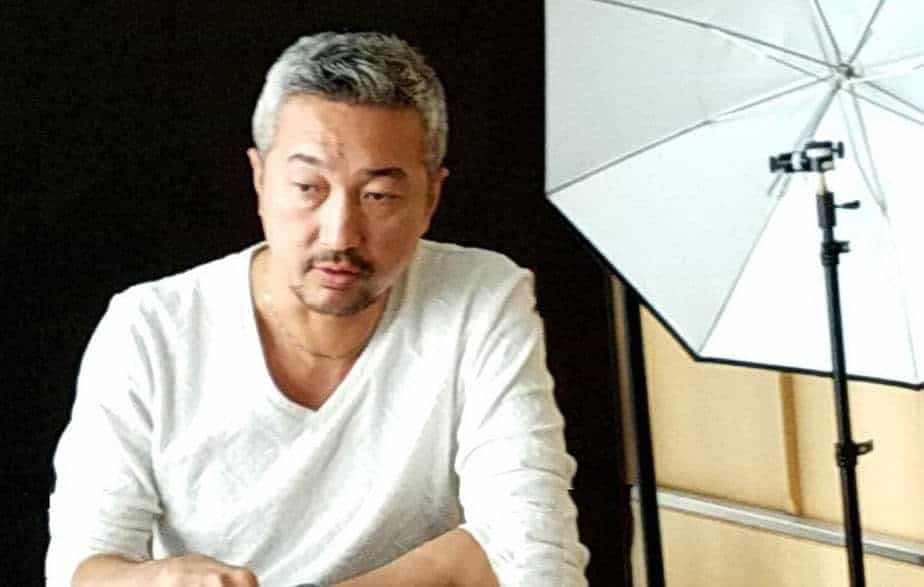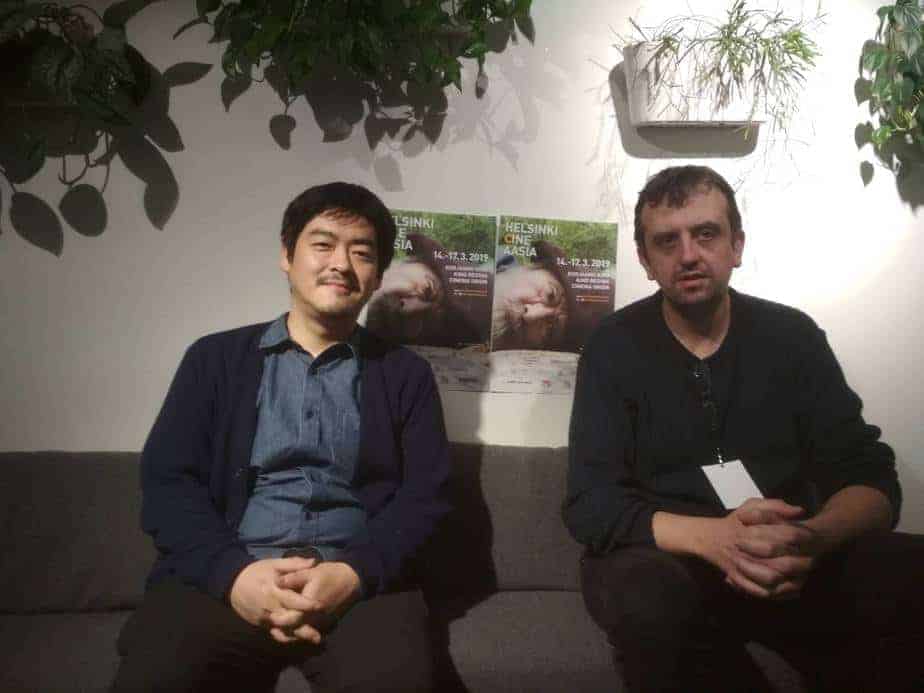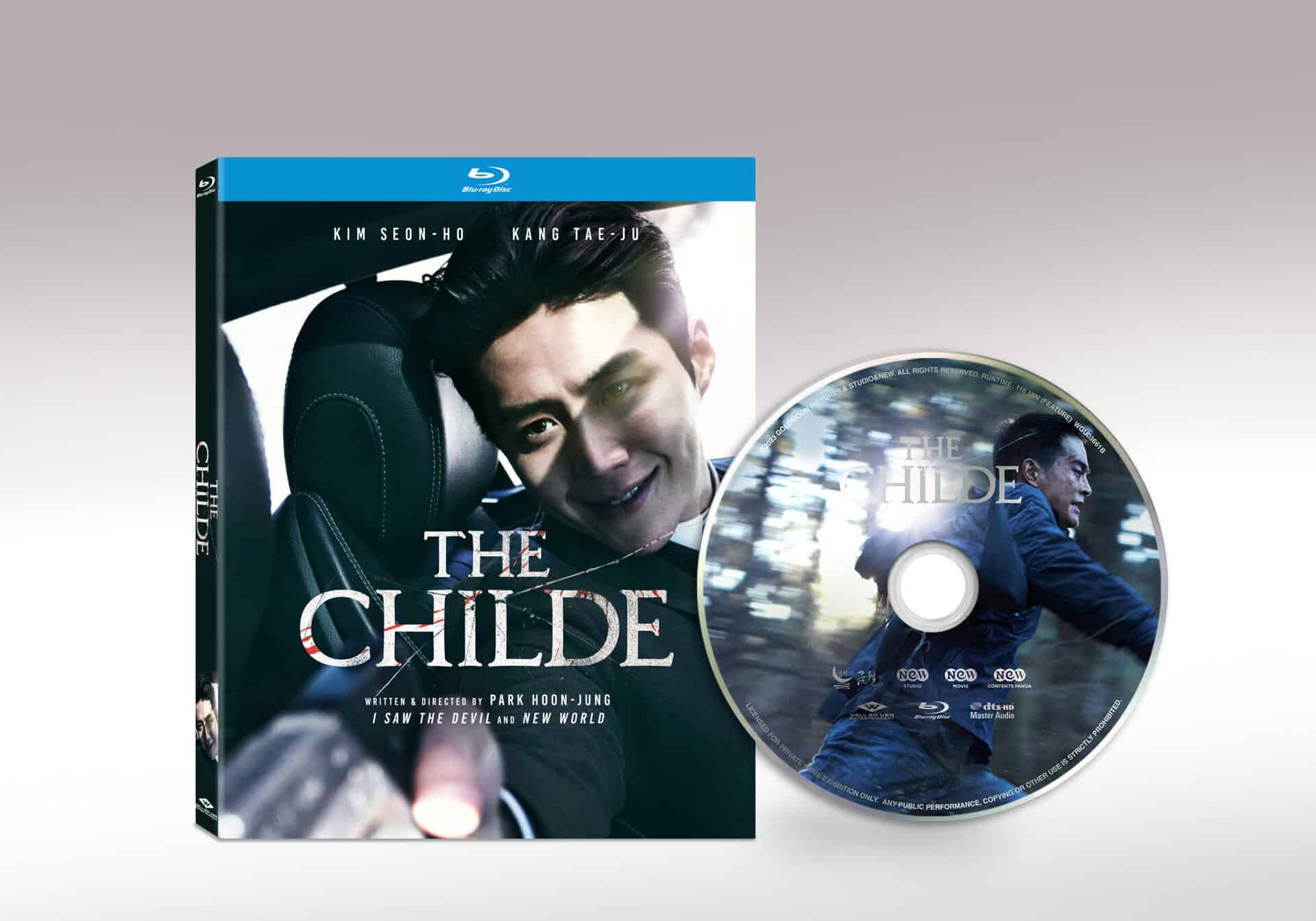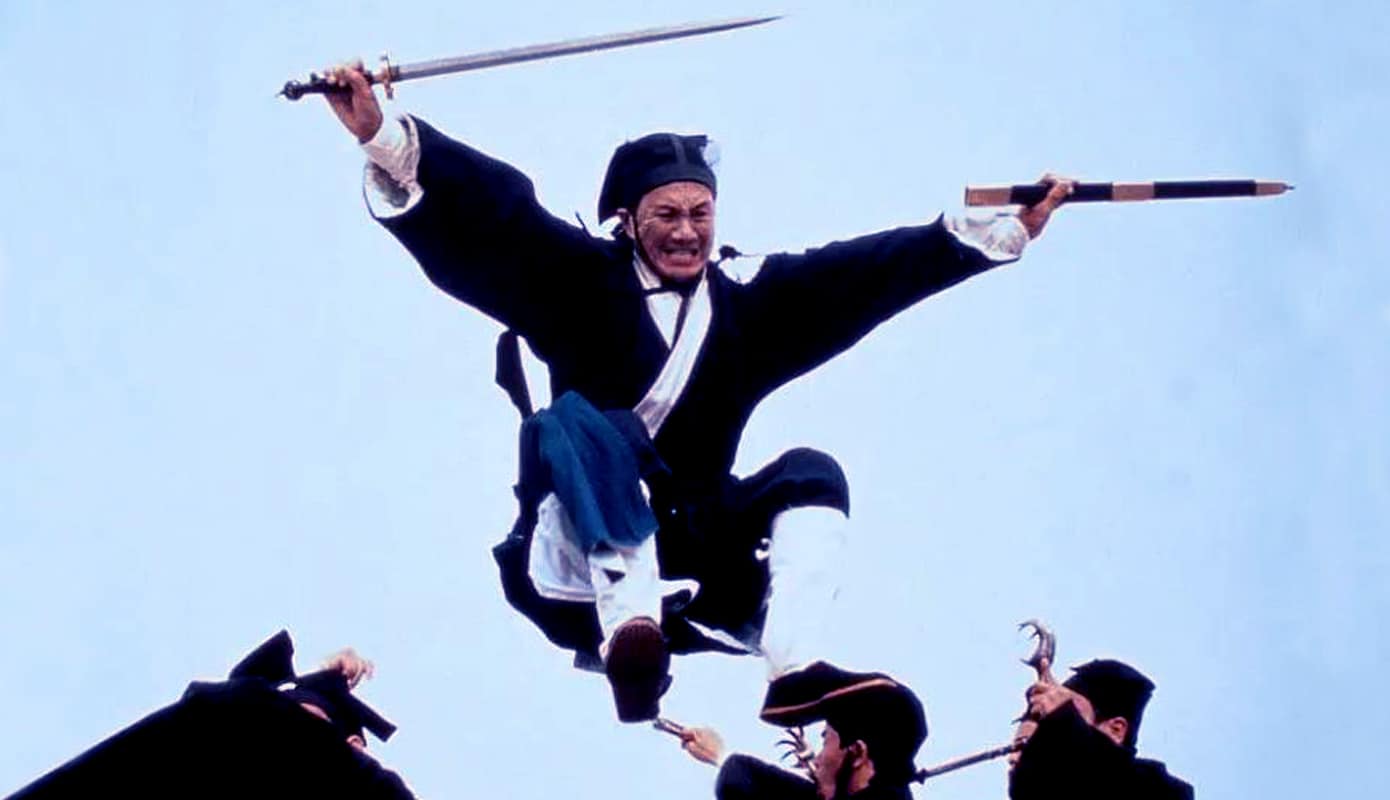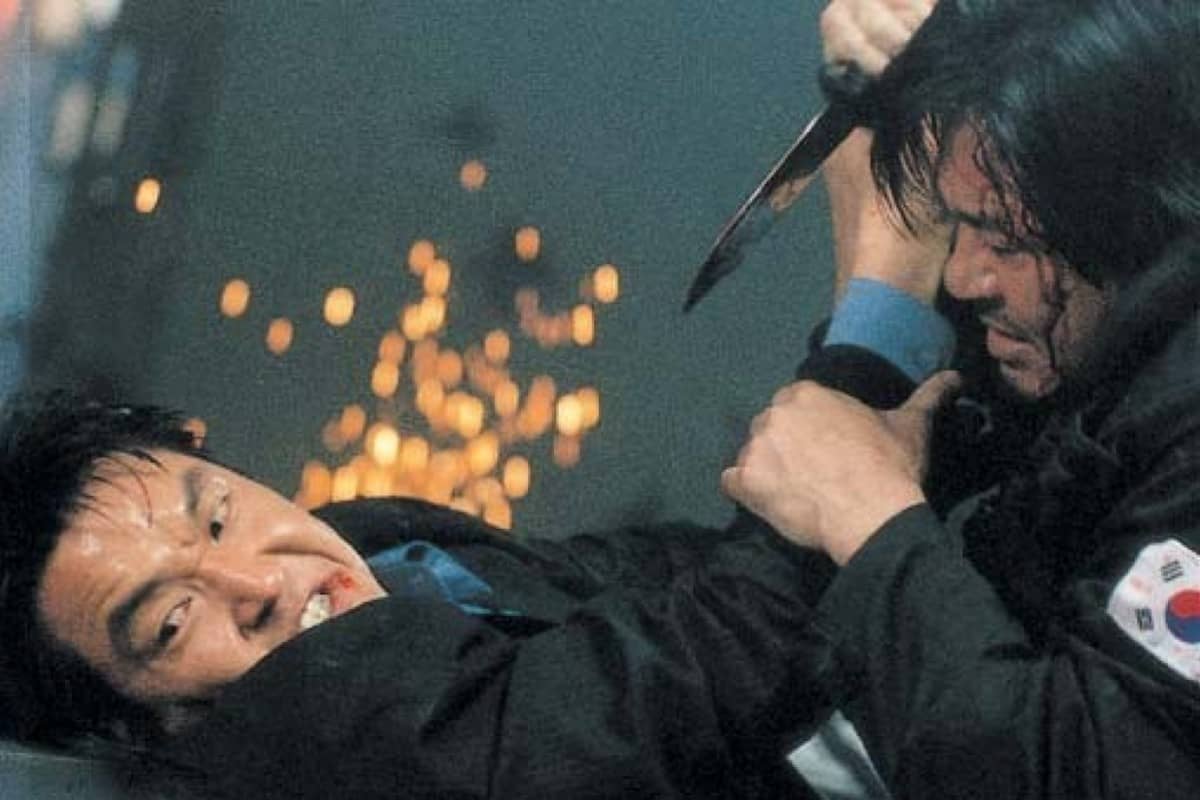You were inspired by Kaidan Chibusa Enokizu to shoot Mimicry Freaks. Can you elaborate on this? What is the meaning of the title?
I saw this drawing painted by Seiu Ito couple of years ago. It was a drawing of a ghost holding a baby. I was so astonished by the strength of this painting. Later, I found out that it was very rare drawing of a male ghost and not a female. Mr. Ito drew this painting inspired by one episode of the Japanese tradition of comic storytelling known as Rakugo titled “Kaidan Chibusa Enokizu ”.
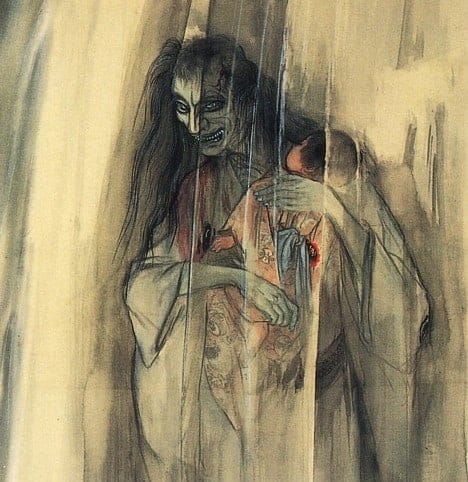
So the title of this drawing is actually the title of this Rakugo episode. And to tell you the meaning of this title, I have to explain the story of this Rakugo episode.
Kaidan Chibusa Enokizu is about a man who became a ghost by stealing his wife and getting killed for. That drives his wife to depression and she cannot produce milk for her baby, which has just been born. So the ghost husband appears and tells his wife to go to the shrine called “Enoki” and that will help her milk come out. And she goes there and milk comes out and she raises her baby. “Chibusa” means the nipple. “Kaidan” means scary story.
The film incorporates many different elements, including cult Hollywood horror movies, Japanese folklore, and I also found some similarities with Ryuhei Kitamura's “Versus” and Teruo Ishii's “Horrors of Malformed Men”. Can you give some more details about the different elements you used in the film.
To tell you the truth, I never thought of “Versus” or “Horror of Malformed Man” a bit. Of course I knew those films but they are not in my concept.
As you've already know, this film is so much influenced by “Texas Chainsaw Massacre” and “Evil Dead”. I love those two masterpieces and my concept of making this film was to combine those two and create an unpredictable story.
The film also deals with child abuse and the use of nuclear energy. What is your opinion about these concepts?
Child abuse is one of the most important issues globally and as I am a father of two kids, every time I hear about this crime on TV, it makes me feel like I have to do something about this, and the same with the nuclear energy issue.
However, I didn't wanna make a film saying “Abusing kid or nuclear energy is a bad thing”. That's too obvious and the problem is not that simple. So I wanted to tackle these issues from a different perspective. I hope people get it, but even you if don't get it that's fine with me. As long as people enjoy the film, l'm happy with it.
The story unfolds deliriously, much like a dream or a nightmare. Why did you choose this approach instead of a linear one?
I hate flashbacks in film and I don't believe in flashbacks. People forget the good memories so easily and always remember the bad ones. Bad memories give people nightmares day and night. That's what I believe and that happens to me. That's why I always choose to use a dream or anightmare or sometimes it happens to be a delusion, instead of using flashbacks.

The film also features exploitation elements, tortures for example and much gore. Why are you fascinated with these elements and why do you think so many people enjoy them in movies?
People enjoy them because that's something you never be able to do and never be able to see in your life. So it is fantasy!! Fantasy fascinates people. However, I don't enjoy them. Don't get me wrong. Shooting gore is fun, but I always ask myself, “is it necessary to do this?”
I really believe in the power of the films. I believe films can stop the war or change the world. So if the film is made in correct way, even the gore sequence can prevent the crimes. If it is not, the results will be the opposite. So as I'm a filmmaker, I do believe I do have that responsibility.
I read the shooting of the film in the forest was quite difficult. Can you give us some more details about the shooting of the film and the location?
Well, since we didn't have money to buy multiple heaters, we only had one on the set. It was on November,during the winter season in Japan. It was ZERO degree in the forest. Not only we didn't have heaters but also food. Plus, we didn't have enough time to sleep. Actually we did sleep for like 10 hours in 7 days.
Eventually, everybody started to fight and yell. Nobody cared about nothing at that time. And one producer started to speak on the phone, which was connected to nobody.
As I was also a producer, I thought I have to make a call for making this picture. Everybody went over the top, and that's why the miracle happened and we made it through.

You also worked as cinematographer and editor of the film. Was it difficult dealing with all those capacities by yourself?
Yes. But I had to do it. Because if you hire the crews in a low budget film, it is really hard to get skilled workers together. Usually, you get un-skilled workers and this causes troubles which I definitely don't want. So I decided to do it on my own rather than using poor crews, to save time, money and the quality of the film.
I found the cinematography in the film very impressive. Can you give us some more details about the it and particularly the colors you used in the film?
Thanx!! Yes, I had a hard time on showing the grainy film look. In the process of doing it, I run so many test shoots and found out that shooting with low key-lighting and with 5.6 f-stop delivers the texture that I wanted in the lab. If I had money to shoot with 16mm film and blow-up to 35mm, it would be much easier.
How was the casting procedure for the film like?
I use the CFA team. CFA is an acting team in Japan. A unique thing about them is that at the same time they act, they also work as crew, like producers, production designers, assistant directors, gaffers, and grips. I don't know if another team like them exists in the world.
What is your opinion about the Japanese film industry at the moment?
I think the major industry is in a disaster zone. Most of the producers are not filmmakers. They're like politicians who don't care about the nation. For that reason smart audiences started watching independent films. So, the independent industry is having great era right now.
However, either major or independent, Japanese film industry has the bad habit to function like high school club activities. They make the films which only they can enjoy in their friendly circle. They don't care about audience, culture or international way of thinking. As long as we don't grow mentally, we never gonna come back to that international stage.
Are you working on any new projects?
There are two films coming up. One is a Hong Kong film titled “ON-PAKU” starring Josie Ho and Kazuya Takahashi. We are really having a hard time on this project and we have been taken advantage of, from swindle producers. However Josie and the great fighters are fighting for this film and it will soon be finished.
There is also another film I have finished shooting and that's gonnato be a new type of film noir-horror film.
Both films are in post-production and will be released next year.


